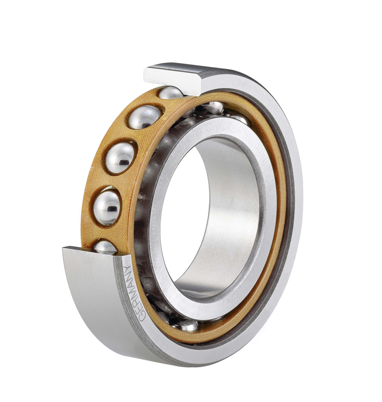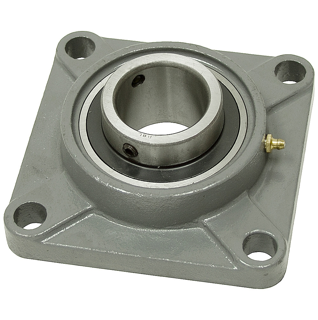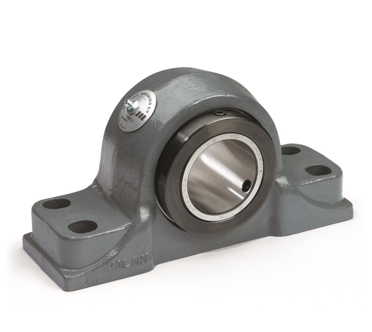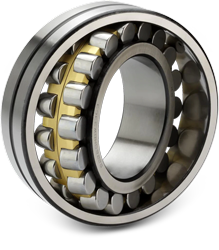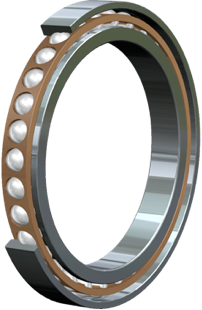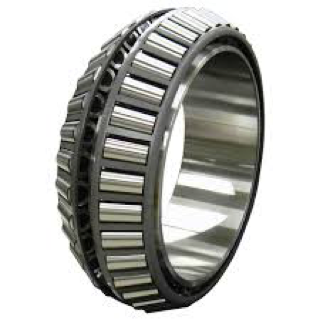Lock nut types, designs, use and applications
Bearing lock nut, also known as elastic stop nut, locknut, stiff nut and torque nut is an essential part of every machine on earth. The primary purpose of locking nuts and bolts is to provide resistance against vibration while the machine is operating. There are many different lock nut types and designs, and locking nuts and bolts have been categorized in multiple groups according to their characteristics, design and applications. Some of the common and most widely used bearing lock nut types are jam nut, plate nut, nylon nut, speed nut and serrated face nut. There are many other apparatuses and methods that are used to prevent loosening.
SKF are well-known precision lock nut manufacturers and these locking nuts and bolts are used to locate bearings and other parts of the machine onto adapter or the shaft. Bearing lock nuts are also used to mount bearings on seats because of easy mounting and dismounting process. These lock nut types have to be secured against vibration that can loosen them and for this purpose, different methods are used. Depending on the application, locking device, key slot or some other locking mechanism embedded in the bearing lock nut itself could be used to prevent loosening.
Embedded locking mechanism in the bearing lock nut itself is most efficient as it reduces the cost and makes the bearing lock nut easier to install. The installation process is easier because there is no external locking device of mechanism is involved. On the other hand, loosening of these locking nuts and bolts usually requires more torque. The company also designs precision lock nuts that come with three locking pins which are strategically placed on the nut parallel to the threads. When these locking nuts and bolts are tighten, pins automatically put pressure on the threads that create enough friction between the nut and thread to prevent it from loosening.
Lock nut types with locking pins are usually used in applications where simple and quick assembly is required. These lock nut types also provide high precision because equally spaced pins automatically adjust the locking nuts and bolts to the right angle without much effort. If needed, these bearing lock nuts could be adjusted with to angular deviation to meet the requirements of the application.
How to prevent self loosening?
Self-loosening is a common problem associated with locking nuts and bolts and there are dozens of methods and apparatuses that are used to prevent this kind of situation, although there is another simple yet effective method that is being used for hundreds of years. You can use two bearing lock nuts to prevent self-loosening and this method is proved to be highly efficient and effective in different conditions. Usually a thin bearing lock nut is used as secondary lock nut type in this kind of situation but this may vary depending on the situation and some factors like the thread type and length of the bolt.
For example in some applications, the thin lock nut types serve primary purpose and they are installed first while the standard bearing lock nut is installed next to it. Additionally, in some situations two standard sized lock nut types are used instead of thin lock nut types but it depends on the length of the locking nuts and bolts and whether the space allows two standard sized lock nut types. The effectiveness of this technique and use of two bearing lock nuts instead of one may vary but in every case, locking effect and prevention of self-loosening of locking nuts and bolts is achieved effectively. The use of two lock nut types goes back to more than 150 years and a certain procedure is required to get maximum efficiency and locking effect.
When standard sized and thin nuts are used, it is considered that the standard nut will go first because it has to carry the load while the thin nut will go after that to provide the locking effect. But it is observed that when thin nut go first and the standard nut is tighten on top of it, the standard nut carries most of the load and relieve thin nut. In ideal conditions, the thin nut should go first and should be tightened to almost 50% of the total torque required, the standard nut must be tighten on top of it and while preventing rotation, both nuts should be tightened.
This particular practice creates excessive force between two nuts that makes it impossible for the standard nut to get affected by vibrations. Although the use of two nuts instead of one has the primary purpose of prevent self loosening yet there could be other reasons for this particular practice. Two nuts could be used to reduce thread stripping as well as to ensure the full strength of the apparatus is applied. As compared to the method described above, using thin nut on top of the standard nut does not deliver the same result because of the significantly lesser opposing forces between both nuts.
How lock nuts work?
Bearing lock nut is a type of nut that prevent loosening of the nut when tighten onto a bolt. These lock nut types are common in industries and home application because of their efficacy and efficiency in different situations. Finding a reliable bearing lock nut is a priority for mechanics while some locking nuts and bolts provide universal services and some could be used in specific situations and applications only. For example nylon lock nut types, which are also known as nylocks, are used universally because of their capability to provide excellent resisting power to self-loosening of bearing nuts and bolts.
Nylon locks are extremely popular locking nut types and are used widely because they are resistive to vibration and corrosion but they cannot be re-used. Because of this limitation, other kinds of lock nuts are used instead of nylon locks in applications and machines where parts are assembled and dissembled frequently. Additionally, in some applications the reuse of such apparatus is highly forbidden, aerospace industry for instance. The applications of lock nuts are wide as they are used in different pre-drilled materials including plastic, wood and most commonly metals.
Nuts are an essential part of the structural construction and machines including engines that are used in automobile. Nuts and bolts are used universally to keep parts and components of the machines fastened together but they have a common problem associated with them. Nuts and bolts are not resistive to vibration that means they loosen with time that can put the operating and reliability of the machine in jeopardy. Loosening of nuts not only requires expertise in problem identification given that there could be hundreds of nuts and bolts used in a machine, but it also needs time and money.
Nuts are an essential part of the structural construction and machines including engines that are used in automobile. Nuts and bolts are used universally to keep parts and components of the machines fastened together but they have a common problem associated with them. Nuts and bolts are not resistive to vibration that means they loosen with time that can put the operating and reliability of the machine in jeopardy. Loosening of nuts not only requires expertise in problem identification given that there could be hundreds of nuts and bolts used in a machine, but it also needs time and money.
Design and structure of lock nuts
Lock nuts are used to solve this problem as they are restrictive to vibration, although another simply solution to prevent self loosening is to use a secondary nut on top of the primary nut but this method needs knowledge of the torque required as well as expertise of how to tighten a lock nut properly. Additionally in some application, because of the space limitation or some other reason, it is not possible to use two nuts instead of one. In those situations, lock nuts are used to prevent self lessening.
Other than these design and space limitations, some industries need specialized solutions to prevent this kind of situations. There are dozens of types of lock nuts that are divided into different categories while nylon locks aka nylocks are one of the most common lock nuts used in different industries. Nylocks are designed by inserting a nylon ring in the nut and that ring comes with slightly smaller diameter than the bolt. When these nuts are tightened, nylon ring becomes a part of the bolt because of the threads.
Nylon insert grips bolt tightly and increases the overall friction significantly that makes the nut immune to vibration. Although different lock nuts have different design and structure but the main idea behind them is the same, lock nuts work by increasing the friction between bolt and nut that makes it impossible for nuts to self loosen because of vibration. In some designs, the friction between nut and bolt is increased by using distorted nuts deliberately. Because of the inconsistency between nut and bolt, the overall friction between them increases that serves the purpose effectively.
Lock nuts are made inconsistent with bolts but either making them a little oval than circular or by using tapered openings. Another solution of increasing the resistance between nut and bolt is to use serrated face nuts while the serrations embedded on the nuts are designed against the rotation of the tightening. So, when this kind of nuts is tightened, it bites the surface and increases the resistance, although these nuts are usually used on some particular surfaces as well as in applications where the installation is permanent because frequent assembling and dissembling of the apparatus reduces its efficacy.
How to tighten a lock nut?
As bearing lock nut standards make them identical in shape and design to normal nuts despite their different purpose, tightening a bearing lock nut is similar to the tightening of a normal nut. Although lock nut types are used in different industries including automobiles, aerospace, agriculture and virtually every industry on the planet yet they are also used in home appliances and machines like bikes and cars so it is beneficial to know how to use lock nuts and bolts for everyday use.
Use of proper nuts and bolts
This is the first step and most important part of the goal, choosing the right locknut is essential to get maximum reliability and efficiency from the apparatus. For example if you are facing a limited space issue then you can use a jam nut. If the installation of lock nut is intent to be permanent and the surface supports it too then using a serrated lock nut is the ideal solution. If there is no space issue and you can choose a bolt of your choice then choose it according to the requirements of nylon lock nut you are going to use.
Use of proper tools
Make sure you use the proper tools for installation, although you can use a relatively smaller adjustable wrench to tighten a lock nut but using a bigger and more appropriate sized wrench gives you advantage of applying required torque on the apparatus. Additionally, make sure you adjust the adjustable wrench properly before using torque otherwise it can damage the nut.
Cautions about lock nuts
Make sure the nut has sharp corners as they are needed for firm grip of wrench. Also make sure the nut if not crooked because it could damage the bolt threads. You can check it by tightening the nut slowly to see the smoothness. If it is not aligned properly or jams, then it is recommended to not use that lock nut. You must know the required amount of torque for a particular pair of bolt and lock nut, although the technical information is not necessary but you must have the idea of how much torque you should apply.
Tips while using lock nuts
Always use right size non-adjustable wrench because an inappropriate sized wrench can strip the sides and corners of the lock nut. Same goes for the adjustable wrench, adjust the wrench tightly around the lock nut to avoid stripping. Cross threading is a common issue associated with lock nuts, so if you encounter resistance while tightening the lock nut stop immediately, undo it and start from the beginning. You can use a single lock nut dozens of times without damaging or reducing its efficacy.
Haven't found what you want? Look here



